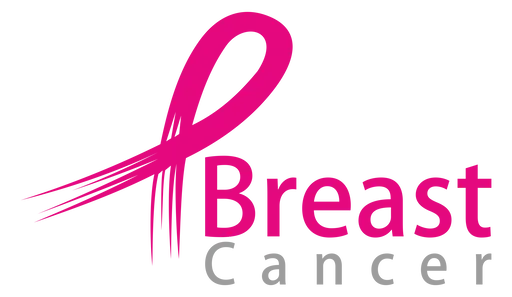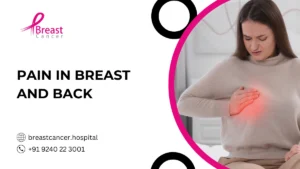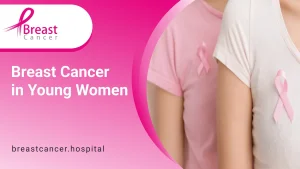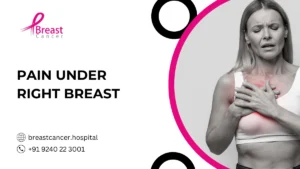Understanding the symptoms of breast cancer in young women is essential for early detection. Although breast cancer is more common in older women, young females are also at risk. Here’s a breakdown of symptoms, treatments, and the role of hormone replacement therapy (HRT). While breast cancer is often associated with older women, young females are also at risk and need to be aware of the signs and symptoms. In this blog post, we will delve into the various symptoms, provide information on treatment options, and offer guidance on hormone replacement therapy (HRT) for breast cancer survivors. Recognizing these symptoms early can significantly affect outcomes and quality of life.
What is Breast Cancer?
Breast cancer occurs when cells in the breast grow uncontrollably, forming a tumor that can often be felt as a lump. This disease can affect women of any age, but its symptoms can sometimes be overlooked in young females. Young women often do not consider themselves at risk, leading to delayed diagnosis. Therefore, awareness about the symptoms of breast cancer in young women is essential.
What is Breast Cancer in Young Women?
Breast cancer in young females, though less common than in older women, presents unique challenges. The symptoms of breast cancer in young women can sometimes be mistaken for benign conditions due to their age. Early detection is vital, and understanding these symptoms is the first step.

What Is a Normal Breast?
A normal breast varies greatly among individuals. Common characteristics include:
- Smooth skin with no visible lumps or redness.
- Uniform texture without irregularities.
- Absence of unusual nipple discharge or inversion.
Changes such as skin dimpling, redness, or unexplained lumps may be symptoms of breast cancer in young women. Monitoring your breasts for changes can help detect issues early.
How Common Is Breast Cancer in Young Women?
Breast cancer in women under 40 accounts for about 6% of all cases. Despite being relatively rare, it poses unique challenges, such as higher rates of hereditary cases and more aggressive subtypes. Symptoms of breast cancer in young women may often be mistaken for other conditions due to their age, leading to delayed diagnosis.
Key Points:
- Early detection is crucial for better outcomes.
- Regular breast self-exams can help identify symptoms early.
- Clinical awareness is vital as young women are less likely to undergo routine mammograms.
Types of Breast Cancer
Breast cancer can be classified into different types based on where it originates and its specific characteristics. Understanding these types helps in identifying symptoms and knowing what to look for.
- Ductal Carcinoma in Situ (DCIS): A non-invasive cancer that is contained within the milk ducts and has not spread to surrounding tissue.
- Invasive Ductal Carcinoma (IDC): The most common form of breast cancer, IDC begins in the milk ducts and spreads to nearby tissue.
- Invasive Lobular Carcinoma (ILC): Starts in the milk-producing glands (lobules) and can spread to other parts of the breast.
- Triple-Negative Breast Cancer: Lacks three common markers: estrogen receptors, progesterone receptors, and HER2. This type is more aggressive but can be treated with chemotherapy.
Symptoms of Breast Cancer in Women
Recognizing the symptoms of breast cancer in women is critical for early diagnosis and treatment. The earlier breast cancer is detected, the more successful treatment can be. Symptoms vary, but common signs include:
- Lumps in the breast or underarm: A new, hard lump or mass is the most common symptom. It may or may not be painful.
- Changes in the size, shape, or appearance of the breast: If your breast changes shape or develops unusual dimpling or swelling, it may be a sign of cancer.
- Unexplained pain: Persistent pain or tenderness in the breast or nipple that doesn’t go away.
- Nipple discharge: Unusual fluid from the nipple, especially if it’s bloody or clear, can be a symptom.
- Skin changes: Redness, thickening, or the appearance of orange peel skin on the breast could indicate cancer.
- Itching: Persistent itching or rashes on the breast or nipple may indicate an underlying issue.
Symptoms of breast cancer in women may also include some of these signs, but it is more often detected in women 40 and older. However, young women should not ignore any changes, as Skin Changes in breast cancer can occur at any age.
Causes of Breast Cancer in Young Women
Although the exact cause of breast cancer is unknown, some risk factors increase the likelihood of developing the disease:
Genetic Mutations – BRCA1 and BRCA2 gene mutations significantly increase risk.
Family History – A close relative with breast cancer raises the likelihood of developing it.
Hormonal Imbalances – Estrogen fluctuations, especially from early menstruation or late menopause.
Lifestyle Factors – Poor diet, lack of exercise, excessive alcohol consumption, and smoking.
Radiation Exposure – Prior radiation treatments to the chest at a young age.
Women who undergo HRT for breast cancer survivors should consult their doctor, as hormone replacement therapy can influence recurrence risk.
Diagnosis and Tests for Breast Cancer in Young Women
Since young women typically have denser breast tissue, traditional mammograms may not always be the most effective screening tool. However, several diagnostic tests can help detect symptoms of breast cancer in young women early.
Clinical Breast Exam: A doctor manually checks for lumps, swelling, or abnormalities.
Mammogram: While less effective for younger women, digital mammograms provide clearer images of dense breast tissue.
Ultrasound: Helps determine if a lump is solid (potentially cancerous) or fluid-filled (likely benign).
MRI (Magnetic Resonance Imaging): Recommended for women with high-risk factors or inconclusive mammograms.
Biopsy: A small tissue sample is taken from the lump for testing.
- Confirms whether the growth is cancerous.
Early detection through these tests ensures the best treatment for breast cancer in women, improving survival rates.
What Is Early-Onset Breast Cancer?
Early-onset breast cancer refers to breast cancer diagnosed in women under 40. While it’s less common in this age group, it tends to be more aggressive and challenging to treat. Symptoms of breast cancer in young women can sometimes overlap with benign conditions, making early detection critical.
In young women, the symptoms may include a lump in the breast, unusual nipple discharge, or skin changes. Early diagnosis and prompt treatment are essential to improve outcomes. Common treatments include surgery, chemotherapy, and targeted therapies, depending on the stage and type of Skin Changes in breast cancer.
Why Understanding These Symptoms is Important
Younger women often have denser breast tissue, making it harder to detect lumps through routine screenings. This can lead to delayed diagnoses. Regular self-examinations and awareness of changes like lumps, skin texture, or unusual nipple discharge can significantly increase the chances of early intervention. Early detection improves treatment outcomes, so young women need to be proactive about their breast health and consult healthcare providers if they notice any abnormalities.
Treatment for Breast Cancer in Women
Treatment varies by cancer type and stage. Options include surgery, radiation, chemotherapy, hormone therapy, and targeted therapy:
- Surgery: Surgical options range from lumpectomy, where only the tumor is removed, to mastectomy, where the entire breast is removed.
- Radiation Therapy: This treatment uses high-energy waves to target and kill cancer cells in the breast area.
- Chemotherapy: Chemotherapy involves using drugs to kill cancer cells and is often used before surgery to shrink tumors or after surgery to eliminate remaining cancer cells.
- Hormone Therapy: For cancers that are hormone receptor-positive, hormone therapy can block the body’s natural hormones from fueling cancer growth.
- Targeted Therapy: Targeted therapies focus on specific molecules involved in cancer growth and survival, offering a more precise treatment for breast cancer in women approach.
What Are the Risk Factors?
Several factors can increase the risk of breast cancer in young women, including:
- Family History: A strong family history of breast or ovarian cancer.
- Genetic Mutations: BRCA1 and BRCA2 gene mutations.
- Hormonal Factors: Early onset of menstruation or late menopause.
- Lifestyle Factors: Smoking, alcohol consumption, and poor diet.
Understanding these risk factors helps in identifying symptoms of breast cancer in young women early. Lifestyle modifications, such as a balanced diet and regular exercise, also play a role in reducing risk.
What Do Lumps in My Breast Mean?
Not all lumps in the breast are cancerous. In fact, many lumps are benign (non-cancerous), but it’s important to get them checked by a healthcare provider to rule out cancer.
- Fibroadenomas: Non-cancerous lumps that are usually firm, round, and moveable under the skin.
- Cysts: Fluid-filled sacs that can feel like a lump. These are often more tender and fluctuate with the menstrual cycle.
- Infections or abscesses: Infection can lead to a lump filled with pus. Symptoms may include redness, warmth, and pain.
Any new lump should be evaluated, especially if it changes in size or shape over time.
HRT for Breast Cancer Survivors
Breast cancer survivors, especially those with hormone receptor-positive cancers, should consult healthcare providers about the risks and benefits of HRT. Hormone replacement therapy (HRT) for breast cancer survivors is a topic of significant concern. While HRT can alleviate menopausal symptoms, it may not be suitable HRT for breast cancer survivors, particularly those with hormone receptor-positive cancers. Survivors need to discuss the risks and benefits of HRT for breast cancer survivors with their healthcare providers to make an informed decision that best suits their individual needs.
Taking the Next Step
Creating awareness and understanding of the symptoms of breast cancer in young women is just the beginning. Encourage readers to take the next step by scheduling regular mammograms, performing self-examinations, and consulting healthcare providers if they notice any unusual changes.
Conclusion
Recognizing early symptoms, including skin changes in breast cancer, empowers young women to seek timely treatment for breast cancer in women and explore appropriate therapies like surgery or hormone therapy. Always consult a healthcare provider for personalized care. By understanding these signs, seeking timely medical advice, and exploring treatment options such as surgery, radiation, chemotherapy, hormone therapy, and targeted therapy, young women can take proactive steps toward their health. Hormone replacement therapy (HRT) for breast cancer survivors requires careful consideration and consultation with healthcare providers. Stay informed, perform regular self-examinations, and take action if you notice any changes. Your health and well-being are paramount.




